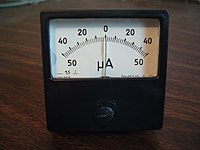fezder
Well-Known Member
Right, i perhaps bought wrong type of ammeter for my car, it doesn't have external shunt and i don't feel confortable dragging high-caliber cable to passengers site....So, it is 60-0-60 amps meter, is it possible to use this with external shunt resistor? of course that would effect reading, but you guys have any idea?



